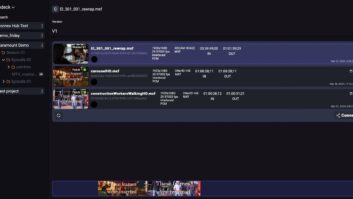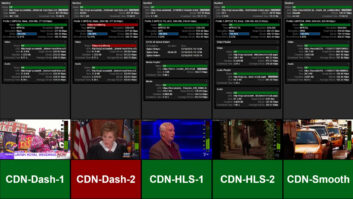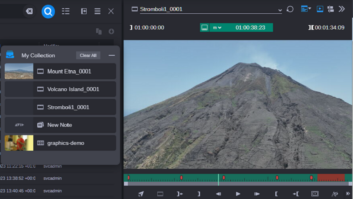
As the reality of television’s necessary co-existence with internet content sets in, broadcasters want to bring the ‘Buy Once, Play Anywhere’ paradigm of packaged media to streamed content. But which standard will win? Richard Dean reports.
About seven years ago, a number of people at Sony Pictures came up with a concept which they hoped would simplify and extend the consumption of digital content across multiple platforms.
The idea developed into what is now known as the Digital Entertainment Content Ecosystem or ‘DECE’ – although not for much longer, as a hopefully snappier brand will emerge when the system goes live later this year.
The principle sounds simple enough, namely to grant consumers rights to content irrespective of the platform on which it is delivered. The first step was to set a Common File Format (CFF). Three content publishing profiles, all based on MPEG-4 H.264 encoding, have been defined for different picture resolutions – namely HD, SD, and PD (personal display).
According to DECE General Manager Mark Teitell, not only are the CFF profiles flexible enough to cater for all flavours of interlaced or progressive HD, but will also include 3DTV as standards emerge. Consumers will be able to download firmware to enable DECE content, although some extra hardware may be required for 3D.
While it would be technically feasible for producers to work natively in CFF, Teitell says they are unlikely to select such a highly compressed codec for capture and editing. However DECE will allow the same post production-to-consumer workflow as conventional media, he adds.
What distinguishes DECE from a ‘mere’ interoperability standard is an innovative concept called the Digital Rights Locker (DRL). This involves the issue of tokens when content is bought to grant viewers access to the same material via other platforms and on other devices, and will be administered by Neustar, the Virginia-based company formed in the mid-Nineties when the US Government mandated local number portability.
“Our aim is to give consumers the simplicity of packaged media, which works on any compatible player, across multiple platforms,” says Mitch Singer (pictured), who was CTO at Sony Pictures when the project was conceived and is now President of DECE.
“For instance customers buying a disc from a retailer could gain access – or grant access to a relative – to the same content over a video-on-demand network even before they’ve taken the shrink-wrap off the physical product.”
DECE plans to offer an open Application Programming Interface (API) to allow any web-enabled shop, service or device to integrate access to the DRL into its own consumer offering. Like a DVD or Blu-ray disc, DECE will offer unlimited playback but with no de facto regional coding – although Singer adds that owners and operators may impose certain censorship or territorial limitations, plus a parental control function.
Avoiding the mistakes of the music industry
Interestingly, amongst a roll-call of industry heavyweights including Sony, Panasonic and Grass Valley plus a string of mobile, chipset, set-top and software manufacturers and most recently the leading media management company Red Bee Media (formerly BBC Broadcast), the 55-plus DECE membership also includes the UK’s largest retailer, Tesco.
While initially aimed at video, there is little doubt that the DECE token system could also be applied to games, books, music and a host of other products – not to mention untold opportunities to match spending on one with advertising for another. Singer is adamant however that customer permission for third-party database disclosure will be on a strictly ‘opt-in’ basis.
Lessons have been learned from similar initiatives in the past, such as the Secure Digital Music Initiative consortium formed as a response to MP3 in 1998, says Singer.
“SDMI was very restrictive, and in the end consumers had to check whether they had the rights to play material themselves,” he recalls. Seen by sceptics as a means of guaranteeing the record industry’s near monopoly over musical content, and using a watermarking technology allegedly detectable by ‘golden ears’ listeners, SDMI was abandoned in 2001.
From the outset, Singer and his team took a pragmatic view to the all-important issue of Digital Rights Management (DRM) underpinning the DRL. Rather than specifying one standard, DECE embraces five, namely Adobe Flash Access, CMLA-OMA V2, Marlin DRM Open Standard, Microsoft PlayReady and Widevine. “We recognised that a variety of DRM formats have been optimised for different platforms, and it is important that DECE covers 100% of CE devices,” he says.
Will the hugely successful iTunes join DECE? “We welcome all companies to join our effort,” says Singer. “We are encouraged by the success we’ve had so far in bringing new members on board, and we continue to talk to a variety of companies about their involvement,” he adds.
Indeed given that the iPhone AppStore already offers a Skype app, even if this is available only on landline WiFi (as it is blocked by mobile operators), it would be rash to rule out one for DECE.
“Apple is a company that innovates and is expanding the awareness of digital media – and don’t forget that with the number of web-enabled TVs predicted to reach 100m by 2013, the multi-platform entertainment market is still in its infancy,” says Singer. “DECE is offering an alternative, with a different feature set.”







